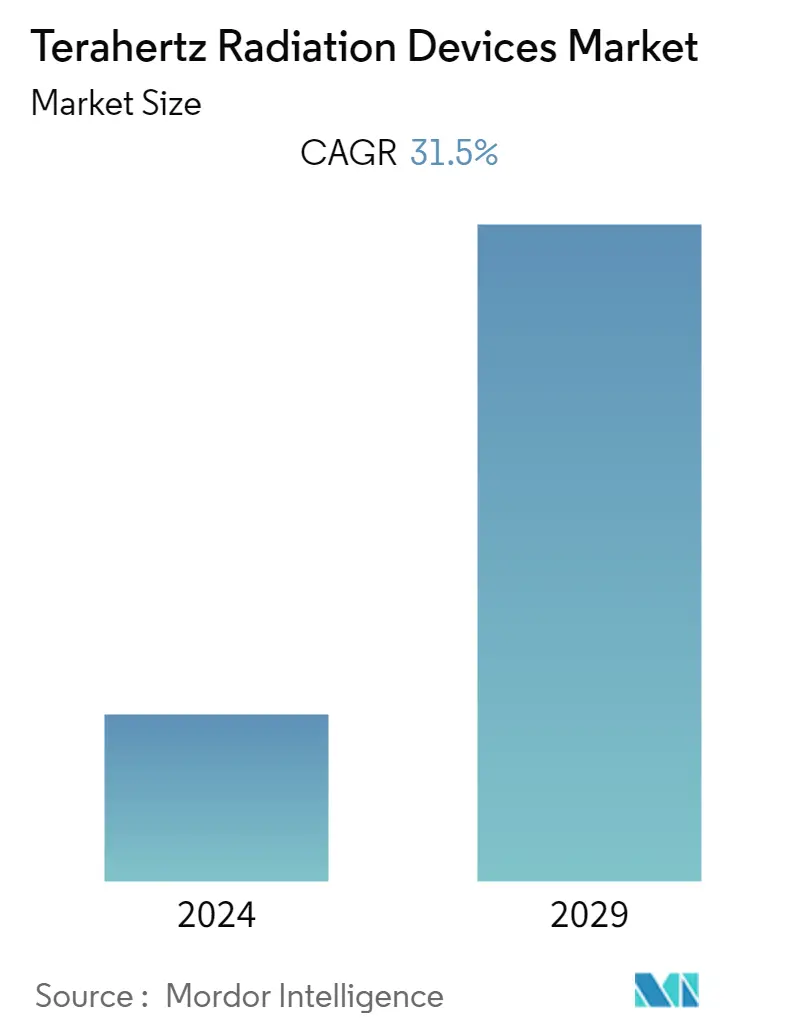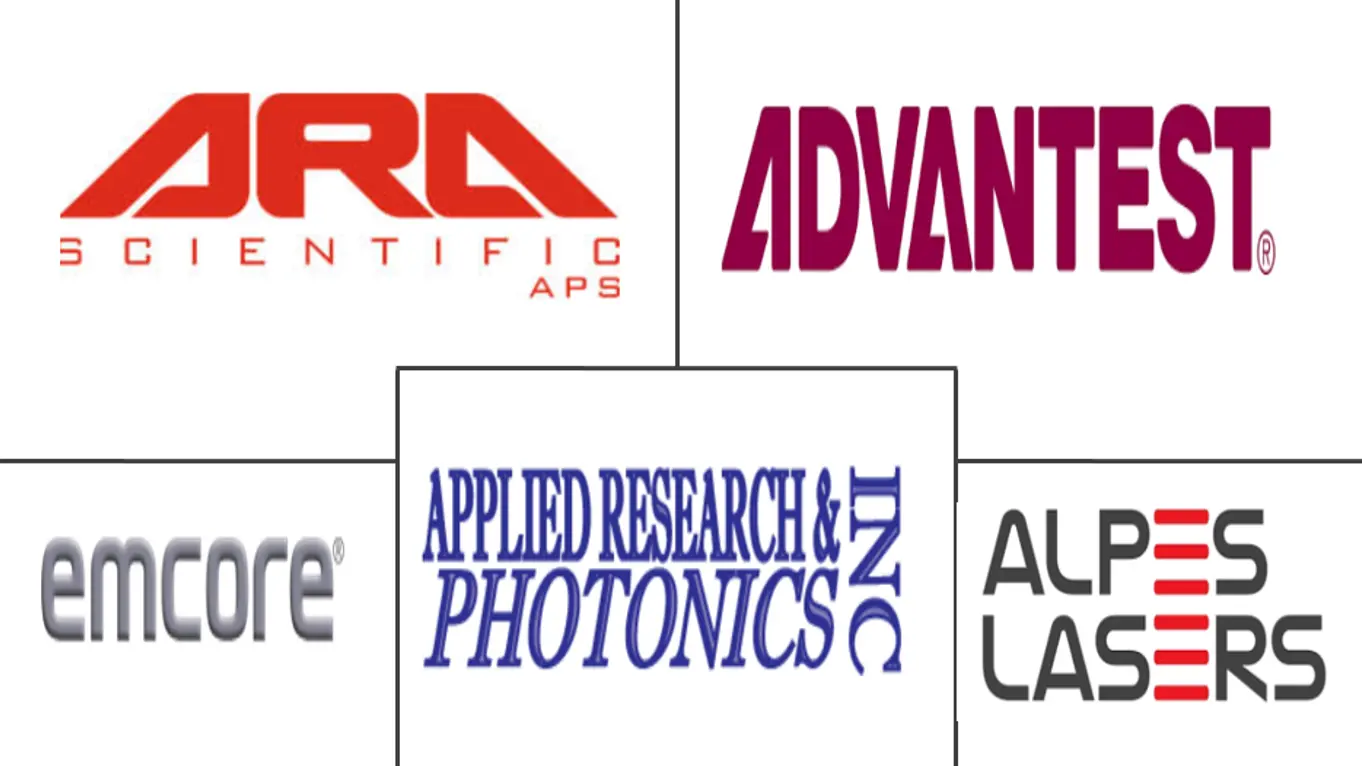Market Size of Terahertz Radiation Devices Industry

| Study Period | 2019 - 2029 |
| Base Year For Estimation | 2023 |
| CAGR | 31.50 % |
| Fastest Growing Market | Asia Pacific |
| Largest Market | North America |
| Market Concentration | Medium |
Major Players
*Disclaimer: Major Players sorted in no particular order |
Need a report that reflects how COVID-19 has impacted this market and its growth?
Terahertz Radiation Devices Market Analysis
The Terahertz Radiation Devices market was valued at USD 100.10 million in 2020 and is expected to reach USD 2.59 billion by 2026, at a CAGR of 31.5% over the forecast period 2021 - 2026. Terahertz technology is an emerging and growing field which has potentials to develop applications varying from passenger scanning at airports to large digital data transfers and has been seeing significant advancements on the scientific front.
- Commercial applications such as security imaging, medicines, explosive devices detection, airplanes autonomous landing and their refueling, high-speed communications, etc. are achievable these days with the arrival of this technology.
- An increment in the number of manufacturing firms in the developing nations, rise in global demand for explicit security systems, medical and defense sectors are driving the global terahertz radiations devices market. Increasing adaptation of terahertz radiation treatment due to its capability of barrier penetration without any damage and usage of terahertz systems in R&D also boosts the market growth. However, the high cost and delayed adoption due to missing awareness are the possible obstacles for market growth.
- Terahertz radiation devices have significant potential in medical diagnosis and treatment because its frequency range matches the characteristic energy of biomolecular motion. Advantageously, terahertz-specific low energy does not cause the ionization of biomolecules, owing to its low energy in the millielectronvolt range, offering a vital advantage in medical imaging over X-rays, which can make biological molecules to break down. One of the most encouraging medical applications of THz radiation is cancer imaging. Most cancers start on the surface of soft tissues, which are the ideal target for superficial imaging using THz radiation.
- Additionally, the expanding application of terahertz technology in a number of industries for quality check and process control monitoring is expected to enable terahertz components and systems to register a remarkable rise in the coming years. For instance, Non-destructive analysis (NDT) of the internal structure of objects (quality control of products), also THz cameras tech is quite effective in finding defects in sealed packages of food products under various enclosures.
- With a limited supply of COVID-19 testing kits in countries, such as India, and the other parts of the world, people with mild symptoms are less likely to be tested. In order to tackle this issue, in May 2020, a team of researchers was working on developing artificial intelligence-based terahertz radiation (t-ray) scanning unit in order to address the limitation of the infrared thermal scanner in accurate and early detection of coronavirus patients.
